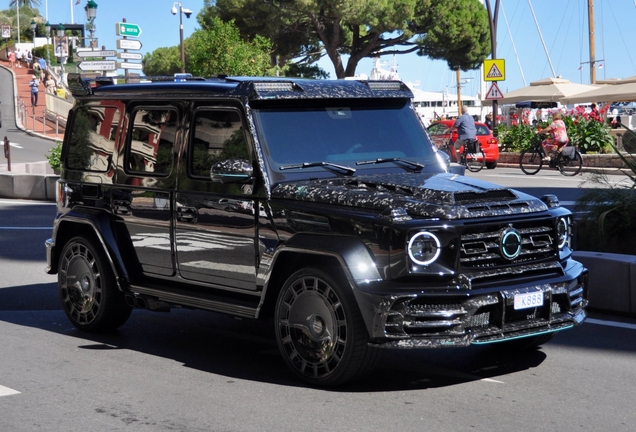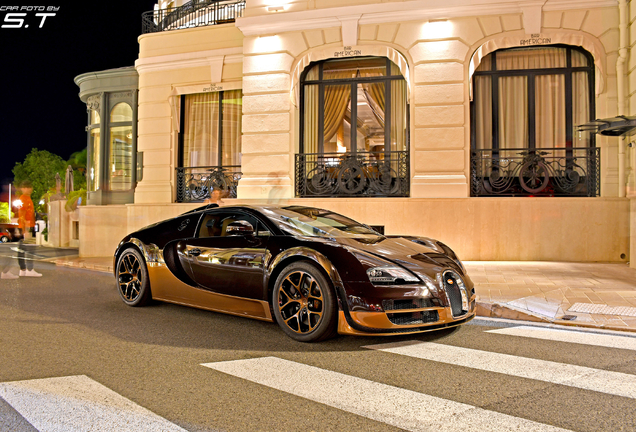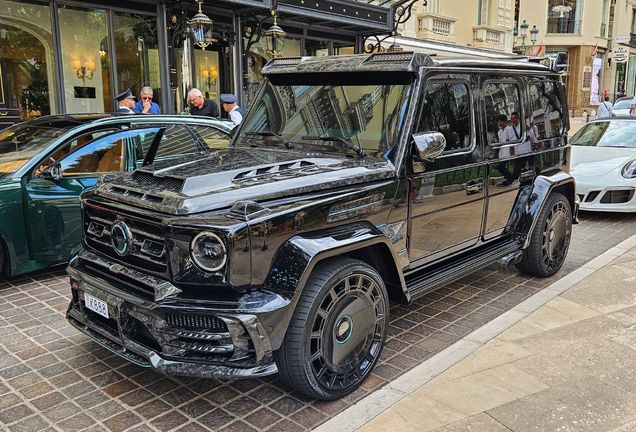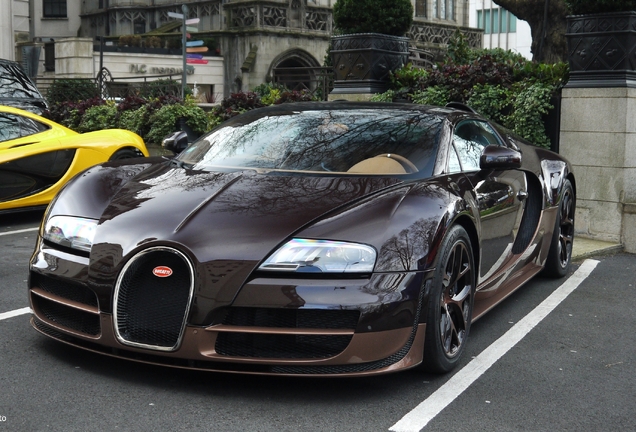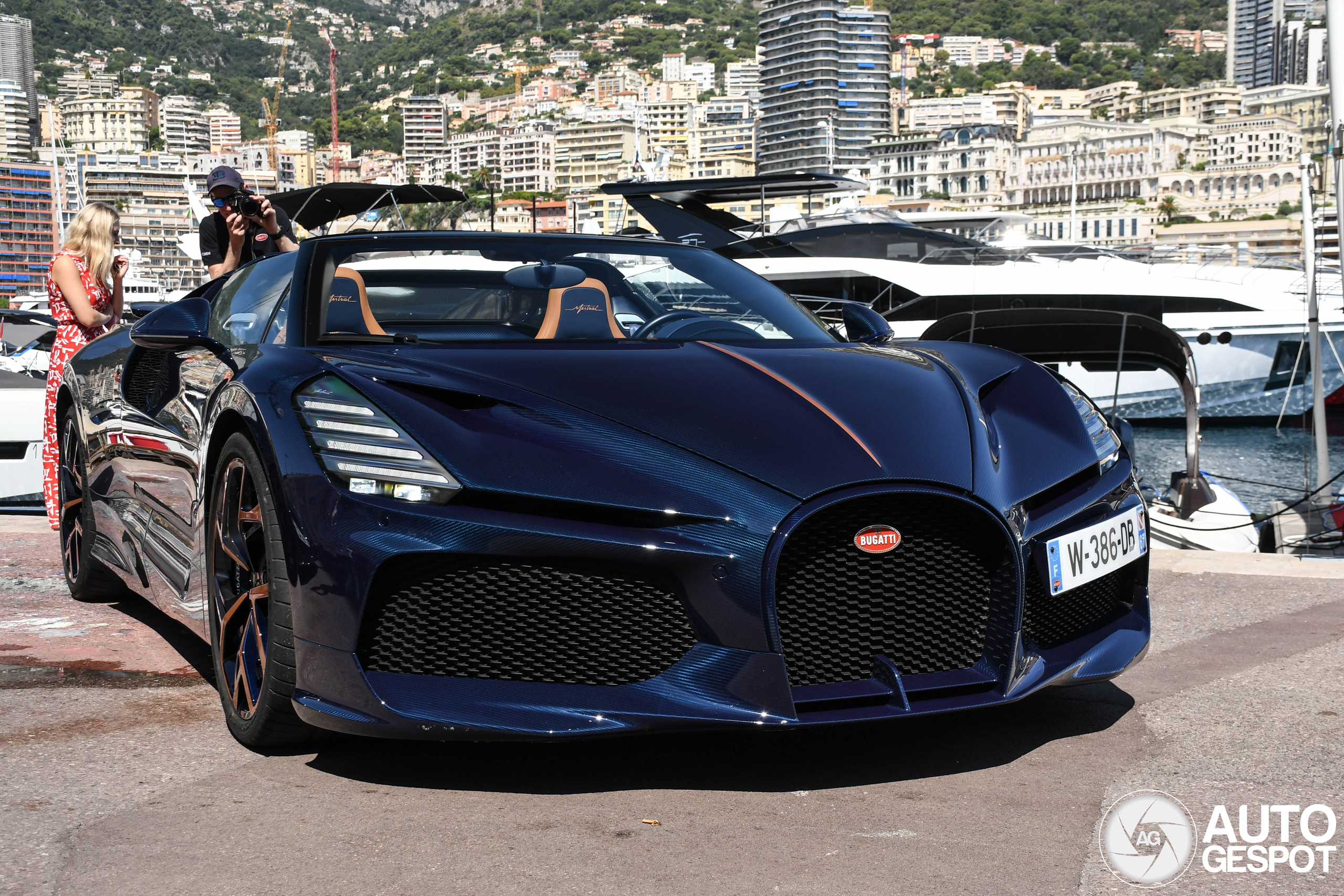
Another day in Monaco, and yet another extraordinary Bugatti graces the streets. This time, it's something truly special - the W16 Mistral, the final Bugatti to ever feature the iconic W16 engine. After several spy shots and a glimpse of a demo car, this is the first production-ready Mistral we've seen on our site. What makes this one particularly intriguing is its license plate, which has a bit of history with us. Back in April 2011, the same plate was spotted on a Bugatti Veyron 16.4 in Mulhouse, France, and again in April 2017 on a Bugatti Chiron in Cuxhaven, Germany. It's likely this is still a factory plate, meaning this car hasn’t yet reached its final owner.
 Click on the photo for more photo's of this spot!
Click on the photo for more photo's of this spot!
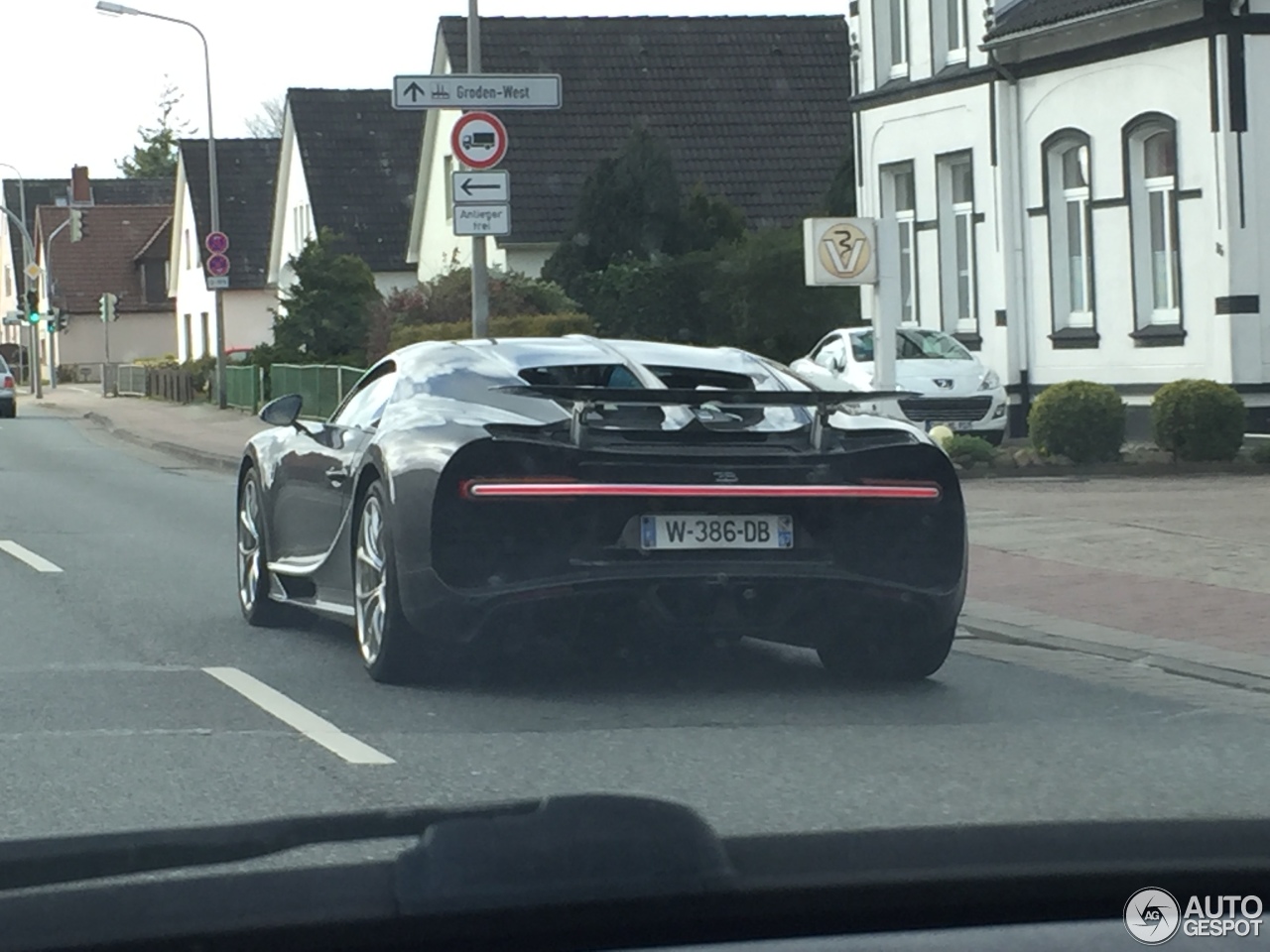 Click on the photo for more photo's of this spot!
Click on the photo for more photo's of this spot!
Since the introduction of the Veyron in 2005, the W16 engine has been the beating heart of every Bugatti hypercar. Now, as the W16 era comes to a close, Bugatti wanted to create something truly exceptional: a vehicle that is exclusive, elegant, and immensely powerful. Enter the Bugatti W16 Mistral - the ultimate roadster. "For the grand finale of Bugatti's legendary W16 engine, we knew we had to create a roadster," says Mate Rimac, CEO of Bugatti Rimac. "More than 40 percent of all Bugattis ever made were open-top vehicles, forming a long line of performance icons revered worldwide. In the era of the Bugatti Chiron, there hasn't been a roadster - until now. The introduction of the W16 Mistral fulfills the overwhelming demand from our customers for a new way to experience the mighty power of our iconic engine. The W16 Mistral opens a new chapter in Bugatti's roadster history, inspired by over a century of open-top legends."
Given the significance of this car, Bugatti carefully chose its name. The roadster is far more than just an evolution of the Chiron; it needed a name associated with freedom, elegance, and speed. The Mistral, a powerful wind that sweeps from the Rhône Valley through the glamorous cities of the Côte d'Azur to the Mediterranean, provided the perfect inspiration. And with the engine being so central to this roadster’s character, the name W16 Mistral was born. The W16 Mistral is powered by the final version of the W16 engine, boasting 1,600 hp, first seen in the Chiron Super Sport 300+. It offers performance unmatched by any other open-top vehicle. The Chiron’s existing monocoque wasn’t simply cut above the A-pillars to create an open design; it was reshaped entirely to create a rounder silhouette without sacrificing performance.
"We know the W16 Mistral will play a pivotal role in Bugatti’s history because it marks the last time this incredible engine will be used in a production car. Our design team was highly motivated to deliver styling that immediately communicates this momentous occasion, drawing inspiration from some of the most beautiful roadsters in Bugatti's history," says Achim Anscheidt, Bugatti’s Design Director.
One of the key inspirations for the W16 Mistral was the 1934 Bugatti Type 57 Roadster Grand Raid. This sporty roadster represents the peak of elegant design. The Grand Raid, which is displayed in the Louwman Museum in The Hague, is distinguished by its twin aerodynamic headrests flowing into the bodywork and a distinctive V-shaped windshield. It also boasts a subtle sportiness. The Type 57’s black-and-yellow color scheme inspired the W16 Mistral's debut paint - a warm black with hints of truffle brown and subtle yellow accents. This combination is not only a nod to the Grand Raid’s bodywork but also pays homage to Ettore Bugatti, the company's founder, who favored the black-and-yellow palette for many of his personal vehicles, including his Type 41 Royale.
The W16 Mistral captures the essence of the Type 57 Roadster Grand Raid's V-shaped windshield, transforming it into a modern masterpiece. The curved windshield visually wraps around the A-pillars, seamlessly blending into the side windows to create a "visor" effect, hinting at the car’s motorsport prowess. The windshield itself is an engineering marvel, curved just enough to create the rounded visor design without impairing the driver’s view. The upper edge of the windshield and side windows flows around the side air intakes, forming a line that sweeps back under the side windows and continues to the front horseshoe grille. This design gives Bugatti’s famous C-line, introduced with the Chiron, a new three-dimensional character.
To keep the side profile sleek while ensuring optimal airflow to the W16 engine, Bugatti separated the side oil cooler inlets from the engine air intakes, positioning them directly behind the occupants' headrests. This design element echoes both the Type 57 Roadster Grand Raid and the first open-top Bugatti of the modern era, the Veyron 16.4 Grand Sport. The result is a car that appears sleek, powerful, and eager to leap forward.
"To reflect the new character of the W16 Mistral, we completely redesigned the front end, drawing inspiration from the vertical arrangement seen in our unique or rare models like the Divo and La Voiture Noire," continues Achim Anscheidt. "The vertically arranged headlights are fully custom, and the famous horseshoe grille has been made more three-dimensional, deeper, and wider. At the rear, we took on the challenge of designing a more striking yet elegant version of the X-theme seen in the Bolide’s taillights, which has left a lasting impact on automotive design." Bugatti's design mantra, "Form follows Performance," was meticulously applied to the W16 Mistral. Every component had to set new standards for beauty while contributing to unprecedented levels of performance.
"The headlights were carefully shaped, incorporating a four-light signature that subtly references the W16 Mistral’s all-wheel drive and four turbochargers. Their three-dimensional surface also serves as an aerodynamic feature, channeling air through the headlights and out of the wheel arches to reduce drag. The wider horseshoe grille allows the high-temperature engine radiator to be fed exclusively by one intake, while the two side intakes focus solely on cooling the intercoolers," explains Frank Heyl, Bugatti Deputy Design Director.
"The X-shaped taillight serves a dual purpose: venting the side oil coolers through channels connecting the triangular negative space between the X-beams with the side intakes. This creates a pressure differential between the intakes and the rear outlets, helping to manage the W16’s cooling system as efficiently as possible."
The new air intakes behind the headrests were developed with rigorous rollover tests in mind. They are made of a custom carbon fiber structure that can support the vehicle's entire weight in the event of a rollover. This new intake layout also enhances the W16 experience for the driver, who can hear a unique symphony - the deep, powerful intake roar of the 8-liter engine under acceleration and the whistle of the four turbochargers when lifting off the throttle. It’s an unparalleled auditory experience in the automotive world.
To achieve this unmatched blend of elegance and excitement, the W16 Mistral incorporates the latest technical innovations. Bugatti's advanced composite materials are combined with cutting-edge titanium and aluminum 3D printing to achieve a distinctive design, ultimate performance, and robust reliability. A thorough analysis of the W16 Mistral’s dynamic stiffness allowed engineers to develop lightweight solutions that ensure optimal handling and performance under the most extreme conditions.
The interior of the W16 Mistral is carefully crafted, drawing inspiration from the Chiron to provide an elegant and luxurious experience while remaining functional enough to ensure all information is easily visible at speeds of up to 420 km/h. Bugatti’s commitment to sourcing the highest quality materials remains a hallmark of its design: modern, lightweight titanium, milled solid aluminum components, and soft, flawless leather.
New design elements include intricately quilted leather for the redesigned door panels, carefully inspected and manufactured to Bugatti’s quality standards, with the vision that it will still look impeccable a century from now. Paying tribute to the famous predecessors of the W16 Mistral, the gear lever is machined from a solid block of aluminum, accented with wood and an amber insert containing Rembrandt Bugatti’s famous “dancing elephant” sculpture, created by the artist and brother of company founder Ettore Bugatti. Variations of this sculpture once adorned the hood of the legendary Type 41 Royale, the most luxurious car of all time, of which only six were built between 1926 and 1933. Beneath the massive, side-opening hood of the Type 41 Royale lay a 12.7-liter inline engine, the likes of which the world had never seen.
The W16 engine in the W16 Mistral is equally unique. When Bugatti’s last roadster, the Veyron 16.4 Grand Sport Vitesse, set a world speed record of 408.84 km/h in 2013, its 8.0-liter W16 with four turbochargers produced 1,200 hp. The W16 Mistral now boasts 1,600 hp, powered by the same engine that propelled the Chiron Super Sport 300+ to a world-record speed of 490.484 km/h in the summer of 2019. There can only be one goal for the W16 Mistral: to once again become the fastest roadster in the world.
"The combination of a roadster with our W16 engine represents absolute perfection. With the roof down and the two large air intakes positioned directly behind the passengers, channeling around 70,000 liters of air per minute through the engine at full power, those inside the W16 Mistral will experience the workings of this revolutionary powertrain like no other Bugatti hypercar," says Mate Rimac, CEO of Bugatti Rimac.
"With the W16 Mistral, we are continuing Bugatti's long history of roadsters, each one unparalleled in design, performance, and rarity. From the Type 40 and Type 41 Royale to the Type 55 Roadster, Type 57 Roadster Grand Raid, and Type 57SC Corsica Roadster, Bugatti has always been synonymous with the pure joy of open-top driving. Even as the W16 engine era comes to a close with the W16 Mistral, we are carrying forward the legacy of roadsters that Ettore Bugatti began over a century ago," Rimac adds.
Only 99 units of the W16 Mistral will be produced, priced at 5 million euros each, with deliveries starting in 2024. The entire production run has already sold out.
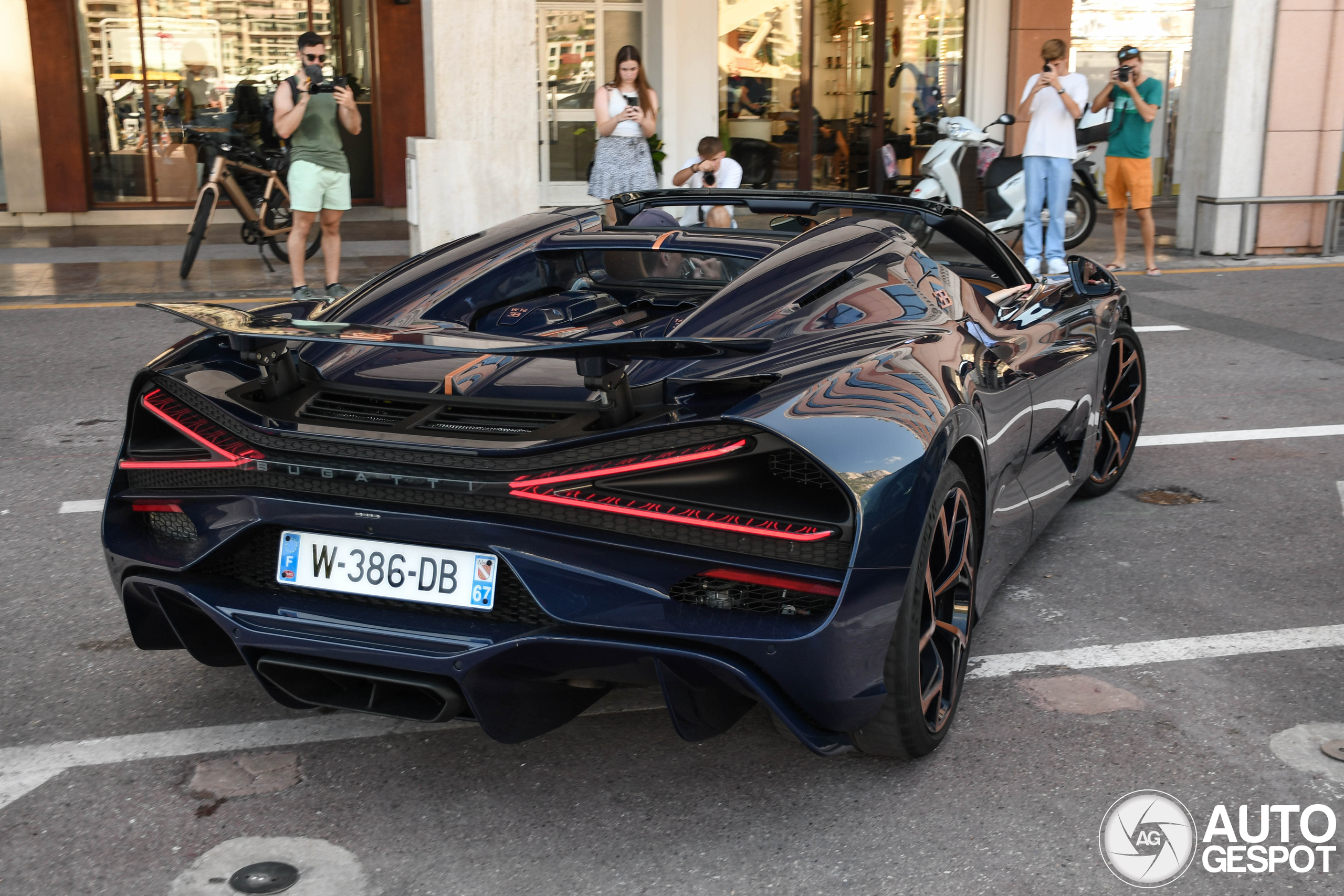 Click on the photo for more photo's of this spot!
Click on the photo for more photo's of this spot!

